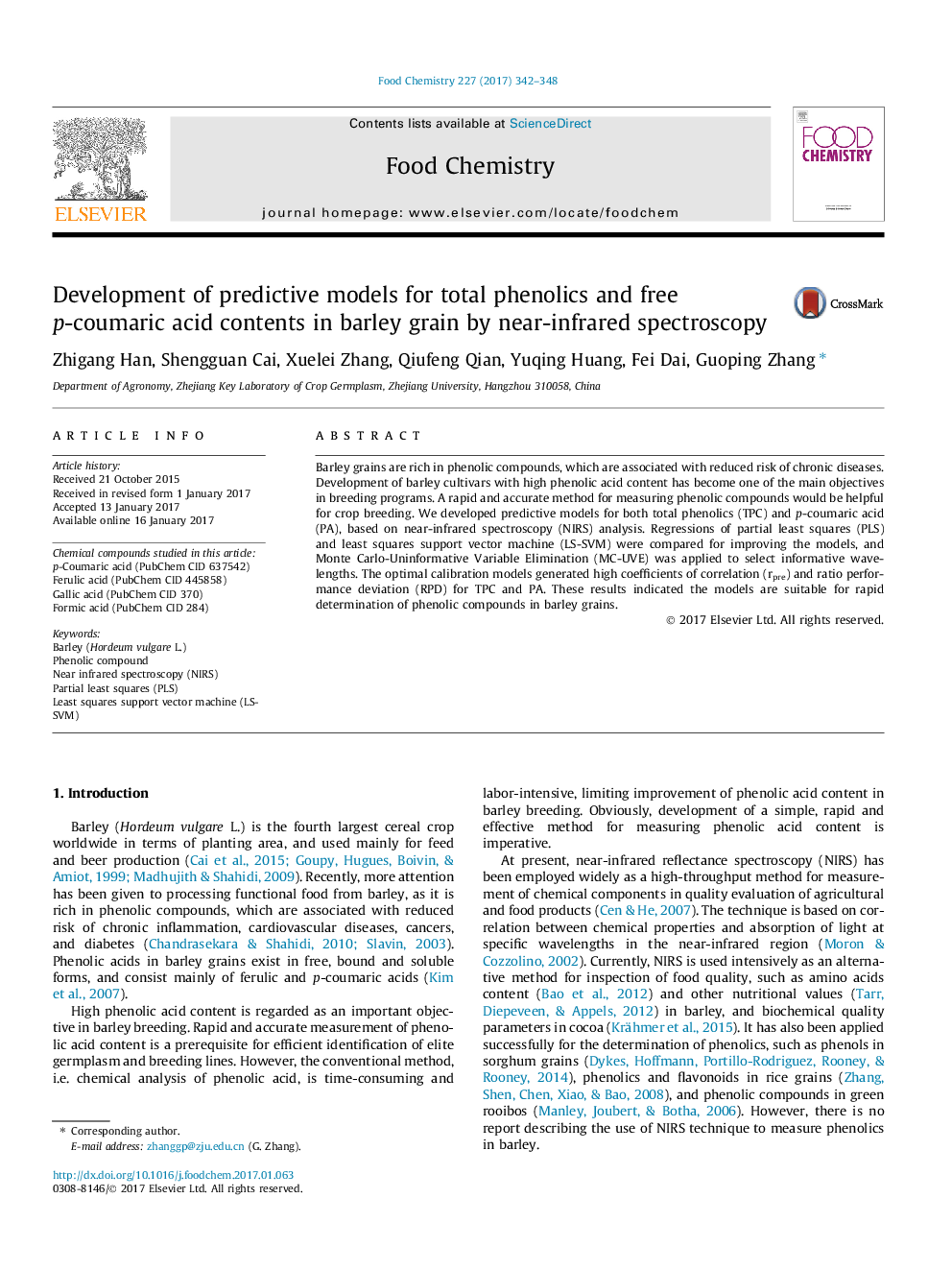| Article ID | Journal | Published Year | Pages | File Type |
|---|---|---|---|---|
| 5133303 | Food Chemistry | 2017 | 7 Pages |
â¢The regression models of total phenolics and p-coumaric acid could be improved by pre-treating NIRS data.â¢Least squares support vector machine model made a better performance for total phenolics and p-coumaric acid.â¢All the calibration models provided powerful predictive capacity for total phenolics and p-coumaric acid.
Barley grains are rich in phenolic compounds, which are associated with reduced risk of chronic diseases. Development of barley cultivars with high phenolic acid content has become one of the main objectives in breeding programs. A rapid and accurate method for measuring phenolic compounds would be helpful for crop breeding. We developed predictive models for both total phenolics (TPC) and p-coumaric acid (PA), based on near-infrared spectroscopy (NIRS) analysis. Regressions of partial least squares (PLS) and least squares support vector machine (LS-SVM) were compared for improving the models, and Monte Carlo-Uninformative Variable Elimination (MC-UVE) was applied to select informative wavelengths. The optimal calibration models generated high coefficients of correlation (rpre) and ratio performance deviation (RPD) for TPC and PA. These results indicated the models are suitable for rapid determination of phenolic compounds in barley grains.
